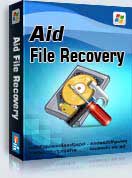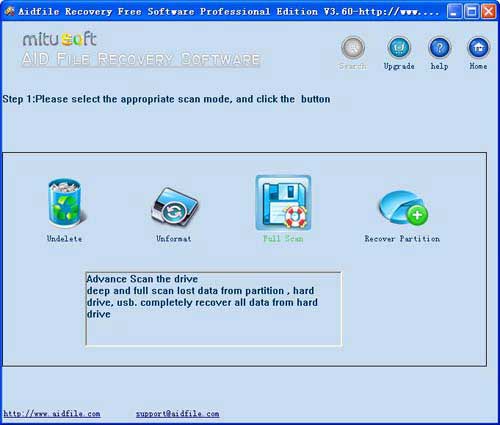Installing Windows 7 on un-formatted SSD (Samsung 850 EVO 250GB) repair tool fix to do data recovery, best file Recovery software help you recover MS word,excel, pictures, music, video files from Installing Windows 7 on un-formatted SSD (Samsung 850 EVO 250GB)
Use "unformat" to recover formatted drive for " Installing Windows 7 on un-formatted SSD (Samsung 850 EVO 250GB) " after quick format,full format,accidentally formatted,reformatting,High-level formatting,Low-level formatting.
Use "recover partition" to recover files - Installing Windows 7 on un-formatted SSD (Samsung 850 EVO 250GB) partition,lost partition,changed ,damaged partition.And if the size or position of partition is changed by format,It can not recover with "unformat"so you can use "recover partition"mode.
Use "undelete" to recover deleted files - Installing Windows 7 on un-formatted SSD (Samsung 850 EVO 250GB) after Virus attack,Recycle bin clear,disk cleanup,Press shift del by mistake,permanently empty recycle bin,shift delete ,accidentally deleted by a mistake.
Use "Full Scan" to recover data - Installing Windows 7 on un-formatted SSD (Samsung 850 EVO 250GB) which can not be found with "undelete" and "unformat" and "recover partition",after showing an error,display as raw file system,unformatted,unknown partition,unpartitioned,needs to be formatted,or the file system is not exfat,not fat32,not ntfs.
"Installing Windows 7 on un-formatted SSD (Samsung 850 EVO 250GB) ", I have seen this issue several times and it pains me to see so many people experience such an issue. Please ensure you take several steps including the ones that you may be unaware of and do as much research as possible before attempting to resolve the issue, and as minor as the step seems, it usually can make a huge difference. Such as my recent issue of, "No drives were found. Click Load Driver to provide a mass storage driver for installation." Step 1. Clone the drive with provided software from manufacturer (in this case its Samsung data migration utility). Yeah sure I did this, but the next day I had several other problems with missing installation or slow loading my games. My alignment was off and my read/writes were whacked the ef out. Sure it worked but had more problems than I could count. Step 2. The second step I took was reading multiple forum posts about some SSD's needing to be reformatted right out of the box, some people suggested using Parted Magic, Ubuntu, or even Windows Computer Management. While there may be some cases like this, this certainly was not my issue. Step 3. Installing AHCI drivers and changing BIOS settings from IDE to AHCI. I am using a UEFI BIOS, and by default, my SATA 1-4 and 5-8 drives are set to AHCI from a list of RAID, IDE and AHCI. So there was nothing I had to change. well at this point since I had already taken Step four, I couldn't install the AHCI drivers via Windows Installation. Worst Windows Install wasn't picking up my other USB mediums to import the AHCI driver. Step 4. Clean the MBR on the target disk and convert disk to GPT using diskpart. This is where most of my problems arose. Soon as I wiped the MBR, not only did my disk not boot, my Windows media was completely gone. I had no Windows to boot into, couldn't run any repairs or system restores, yeah sure this was my fault but only at the cost of listening to what others were suggesting, they weren't liable for my actions. That's the point of troubleshooting right? Remove your USB Install Media from the USB 3.0 Port and place into a USB 2.0 Port. Now Windows Installer is able to see all my drives, and if I had done it correctly on Step Three, I would have seen my AHCI drivers too, but still wouldn't have resolved the issue. My Windows is now installing on my SSD and I can see all of my drives, ONLY because of something so minor as to placing the USB medium into the supported USB Port.
Aidfile Recovery Software Keyfeature
support FAT32 EXFAT NTFS and RAW file system
support Win32 (32 bits) and Win64 (64 bits)
Support Windows XP, Windows 8, Windows 8.1,Windows Vista, Windows 2003, 2008, 2012,Windows 10,Windows 7 .
Desktop & laptops Ultrabook:HP Pavilion,HP Compa,Alienware Alpha,Lenovo ThinkCentre,Lenovo IdeaCentre,Dell Inspiron,Dell XPS,Sony VAIO,Acer Aspire,Asus Transformer,Dell Latitude,Samsung Ativ Book,Asus VivoBook,HP Envy,Lenovo IBM ThinkPad,Lenovo IdeaPad Yoga,Microsoft Surface,Toshiba Satellite
MS Office document (Word, Excel, PowerPoint, Outlook) types (doc, docx, ppt, pptx, xls, xlsx, pst, etc.),photos (JPG, PNG, ICON, TIF, BMP, RAF, CR2, etc.), videos and audios (MPG, MP4, MP3, MTS, M2TS, 3GP, AVI, MOV, RM, RMVB, etc.), compressed files (rar, zip, etc.), PE files (exe, dll, lib, etc.) and so on.

